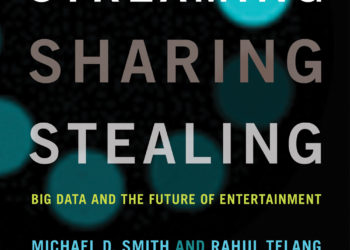
Editor’s Note: José Luis Ortega is a researcher in the Spanish National Research Council’s Cybermetrics Lab. He’s also the author of a recent book, “Social network sites for scientists: A quantitative guide”. The book goes beyond describing the features and functions of scholarly collaboration networks, to explore them from a quantitative perspective; during 2015, Ortega extracted millions of records from ResearchGate, Academia.edu, Mendeley, CiteULike, Zotero and BibSonomy, and analyzed/compared patterns in the capabilities and usage of these sites over time. Ortega provides a summary of his results below.
Background: content as fuel for networking
Any personal relationship is founded on information exchange. Our friends, families and acquaintances supply us with information that builds up a picture of our environment, and helps to create trust. The information we share (text, videos, pictures etc) depends on the nature of the relationship, and may be intended to reinforce the closeness of existing ties, or to attract new contacts. In this, researchers are no different from the general population, and increasingly use social platforms to stay up to date with, and to share information.
Where researchers do differ from other social media users is the tendency or need to share publications. The study reported here shows that the ability to share full text publications within a platform is closely related to the success of a platform. Document sharing systems, such as ResearchGate and Academia.edu, stand out as the most successful spaces for both content generation and social networking, because they support easy sharing of full text documents, the primary academic output for a researcher, and thus the main “asset” for scholarly networking. This success contrasts with the stagnation of social bookmarking sites (CiteULike or BibSonomy) and some reference management sites (Zotero); the main transactional objects in these spaces are bibliographic references, and the focus is typically on creating a library of references to other people’s work, rather than a profile of your own output. The continuous drop in users, documents and actions in these platforms demonstrates that scholarly users prefer spaces where they can promote their own work. Mendeley blends these two approaches (enabling management of references but also sharing of the user’s own full text publications), but sees more usage as a reference manager than a sharing network. Nature Network, BiomedExperts and Connotea may all have failed because they overlooked the importance for academic users of sharing their own publications, not just bookmarking other people’s. It is possible to perceive a transition from sites that aimed simply to connect users for discussion purposes (Nature Network, BiomedExperts) through those that aimed to connect users via a common activity (CiteULike, BibSonomy) to those that aimed to connect users via content (ResearchGate, Academia.edu).
Activity defines typology of users
The different functions of a site seem to affect the extent to which users are active, and also seem to correlate to different user types. Content sharing sites had the most active users (68% of the 1.1 million researchers sampled from ResearchGate, and 46% of the 1 million researchers sampled from Academia.edu, had posted content to the platform). Reference manager sites had poorer levels of activity:
- BibSonomy: 0.9% of the 918.705 researchers sampled had saved references to their library, 18% had joined a group and 10% had contributed content to a group
- CiteULike: 26% of the 208,243 researchers sampled had saved references to their library, 14% had joined a group
- Zotero: 11% of researchers sampled had followers, and 7% were following another user
- Mendeley: 14% of the 1.03 million researchers sampled had posted content, 7% had joined a group, and 33% had followed another user; the average number of followers per users across the network is one
Diogenes Club? Private interests over public uses
Analysis of researchers’ behavior within these platforms suggests that most register to use them for egoist motives rather than for collaborative purposes. This may be considered surprising, given that participation in academic social networks has been lauded as an example of the cooperative nature of science (Cann et al., 2011; Zaugg et al., 2011; Calhoun, 2014). The label “scholarly collaboration network” may be inappropriate given that the functionality of these sites is as much focused on individual purposes as collaborative ones (e.g. managing one’s own reference library, albeit in an open way, rather than intentionally collaborating in the creation of a shared reference library), and given the high levels of “passive” or inactive users in some cases. “Passive” users may be viewing the content posted by others, for example to remain up to date with the field, or may never have returned to the site after signing up. In particular, the low level of participation in groups – a feature specifically designed for collaboration between users (Oh and Jeng, 2011) – is a clear indication that researchers do not see collaborative capabilities as the primary value of these services. Mendeley’s “public catalog” (the shared bookmarks created after its transition from desktop application to social bookmarking tool) contains only 12% of the items posted to the service; similarly, only 4% of Zotero users’ libraries are public. Given that a substantial proportion of researchers are not using the social/collaborative aspects of these sites, their success may be more as private desktop reference managers than as scholarly networks.
Participation levels are substantially higher in document sharing sites, which not only have the highest levels of active users in terms of posting content, but also in terms of the numbers of users following other users, or being followed by other users. However, in Academia.edu, two types of users were identified: viewers and producers. The majority (73%) are viewers, using the site to follow research activity of other members but rarely uploading any content. By comparison, producers (46%) form a smaller group of highly productive researchers who post a large quantity of items but are less active in terms of following others’ activity in the network. Activity levels may also be related to an egotistical interest in metrics rather than necessarily an altruistic desire to share. That the primary collaboration tool in Academia.edu and ResearchGate, the “Question & Answer” feature, is little used (only 1% of users raising a query) indicates again the low value that academics place on collaboration through these sites.
In summary, quantitative analysis of academic participation in so-called scholarly collaboration networks suggests that they resemble a Diogenes Club1, where members gather together for common purposes but nonetheless carry out their activities independent of one another.
1 Co-founded by Sherlock Holmes’ brother, Mycroft Holmes, the defining rule of the Diogenes club was that members were forbidden from talking to one another.
References
Calhoun, K. (2014) Exploring Digital Libraries: Foundations, Practice, Prospects. London and Chicago: Facet Publishing and ALA Neal-Schuman.
Cann, A., Dimitriou, K. and Hooley, T. (2011) Social Media: A Guide for Researchers. London: Research Information Network. Available from: http://www.rin.ac.uk/our-work/communicating-and-disseminating-research/social-media-guide-researchers (10 September 2015)
Oh, J. S. and Jeng, W. (2011) Groups in Academic Social Networking Services–An Exploration of Their Potential as a Platform for Multi-disciplinary Collaboration. In 2011 IEEE Third International Conference on Privacy, Security, Risk and Trust (PASSAT) (pp. 545-548). Washington: IEEE Computer Society.
Zaugg, H., West, R. E., Tateishi, I. and Randall, D. L. (2011) Mendeley: Creating communities of scholarly inquiry through research collaboration, TechTrends, 55(1): 32-36.
Discussion
4 Thoughts on "Guest Post, Jose Luis Ortega — Academic Social Networks: Collaborative Environments or Diogenes Clubs?"
This is a really nice analysis. Publishers have been trying to crack into the “collaboration” tools market as this was seen as a value add and closely related to the content. I don’t think researchers are eschewing collaboration. They just aren’t looking for tools to facilitate collaboration at the content level. At the same time, it’s been clear that ego boosting (or self promotion) tools were more popular (alt-metrics, article level metrics, h-indexes, etc.). This analysis provides more context to those observations.
I don’t think any of this is surprising — those who have been trying to sell these networks as a way that researchers will find collaborators have long undersold the complexity of those relationships, and the stakes involved. If you’re going to dedicate years worth of work, your hard-earned and scarce funding dollars and what are often precious and irreplaceable reagents/materials to a project, you need an enormous amount of trust in those you collaborate with. It gets even more intense when you’re a student or postdoc and your entire future is on the line — choose a bad collaborator and you’re now years behind and may never catch up to your cohort.
I suspect a lot of those pushing these networks work in computational fields, where “collaboration” means sending someone your algorithm or giving them access to your API. Those low-risk sorts of collaborative interactions aren’t the norm for many fields.
It’s also not surprising at all to learn that the likes of ResearchGate and Academia.edu are mostly used for the quasi-legal uploading and downloading of papers and little else. Good to have some data to back up those suspicions.
There’s another useful posting on this topic from Bianca Kramer and Jeroen Bosman at https://101innovations.wordpress.com/2016/12/15/academic-social-networks-the-swiss-army-knives-of-scholarly-communication/



